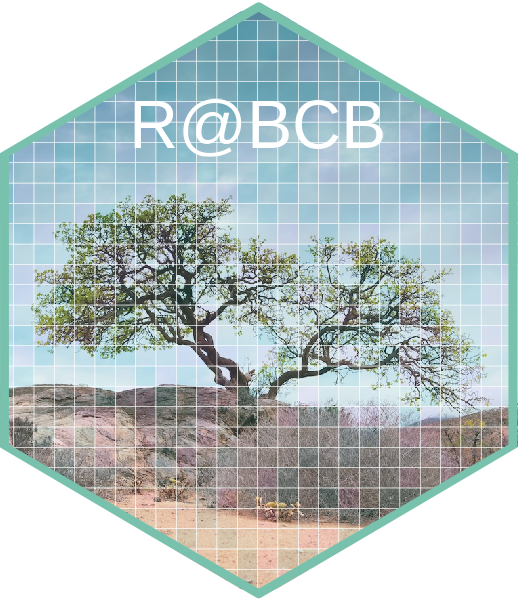Lab 2: Miscellaneous Calculations
- Lab Date: 23 September 2024 (Monday)
- Due Date: 7:00, 30 September 2024 (Monday)
Background
Students will work as individuals; assignments are per individual. This lab is due on Monday 30 September 2024 at 7:00 on iKamva.
Pre-Lab
Read this lab and contextualise within the pertinent material in your text.
Post-Lab
Upon completion of this lab:
- transcribe all tables and questions (Exercises A-E) to an electronic document and submit on iKamva. To submit online on Monday 30 September 2024 at 7:00.
Questions
Question 1: Dilutions (10 marks)
A 1.5% (mass:volume) carrageenan gel consists of 0.75g of carrageenan dissolved in 50 ml of 1% KCl. You accidentally added 0.87g to the 50 ml.
- What percentage gel have you inadvertently prepared?
- How much additional water must be added to the 50 ml to achieve the desired 1.5% gel?
- Carrageenan is a polysaccharide. Identify its biological origin: which photoautotrophs synthesise it?
- Explain its ecological role in those organisms.
- Describe how humans exploit carrageenan’s properties in food or industry.
Question 2: Quantum Light Measurements (4 marks)
monochromatic blue light source (420 nm) provides a photon flux density of 120 μmol photons.m-2.s-1.
How many photons will fall on an area of 25 cm2 over a 2-hour period?
(Be sure to convert the area into square metres, and assume flux density remains constant.)
Question 3: Plant Growth Rates (9 marks)
For each scenario below:
- Identify the biological process the measurements represent;
- Write down a suitable equation for calculating the process;
- Calculate the rate;
- State the resulting units.
| Scenario i (4 marks) | Scenario ii (5 marks) |
|---|---|
| - Day 1: Plant biomass of 99 g | - Time, 0 minutes: 7.95 mg/L O₂ |
| - Day 100: Plant biomass of 149 g | - Time, 20 minutes: 11.39 mg/L O₂ |
| - Algal biomass: 2.3 g fresh mass |
(In Scenario ii, calculate the oxygen production rate per gram of algal fresh mass.)
Question 4: Light Attenuation (15 marks)
You are a marine scientist assessing light penetration in the water column off Richards Bay, KZN. Measurements are taken in 5 m increments down to 50 m. Two stations are sampled:
- 1 km from shore (incident radiation at surface, 8:00: 1,213 μmol photons.m-2.s-1)
- 20 km from shore (incident radiation at surface, 9:35: 2,166 μmol photons.m-2.s-1)
Unfortunately, your submersible light meter was left in the lab; only surface values are available.
- Using the Beer–Lambert law
- Justify why these theoretical curves are a reasonable approximation of reality.
- Identify physical and methodological factors that would cause deviation from the actual in situ profiles.
Question 5: Photosynthetic Rate Calculation (10 marks)
A leaf in full sunlight absorbs 10 mol of photons per square meter per second (mol m⁻² s⁻¹). Its quantum yield is 0.05 mol of CO₂ fixed per mol of photons absorbed.
Calculate the photosynthetic rate (in μmol CO₂ m⁻² s⁻¹) of the leaf under these conditions.
Question 6: Relative Growth Rate (RGR) (5 marks)
The biomass of a plant at time t₀ is 50 g. After 10 days (time t₁), the biomass is 80 g.
Calculate the relative growth rate (RGR) in g g⁻¹ day⁻¹ using the equation:
Where:
Explain why logarithmic growth is used instead of simple arithmetic increase.
Question 7: Respiration Rate and Plant Carbon Balance (5 marks)
A plant in darkness consumes 5 mg CO₂ per hour for respiration. During the day, its photosynthetic rate is 15 mg CO₂ per hour. Assume 12 hours light and 12 hours dark.
Calculate the net carbon balance of the plant over a 24-hour period. Is it positive or negative?
(Clarify whether the rates refer to whole-plant values or per unit biomass in your calculation.)
Question 8: Additive Light Intensity at Different Depths in Water (10 marks)
In an aquatic experiment, photon flux density at 2 m depth arises from multiple sources:
- Direct sunlight = 400 μmol photons m⁻² s⁻¹
- Diffuse underwater reflections = 120 μmol photons m⁻² s⁻¹
- Scattered light from particles = 50 μmol photons m⁻² s⁻¹
- Calculate the total photon flux density at a depth of 2 meters.
- If a plant requires ≥500 μmol photons m⁻² s⁻¹ for photosynthesis, is the requirement met?
- Briefly discuss how turbidity or scattering would affect these additive contributions in natural waters.
Question 9: Spectrally Resolved Attenuation and the Euphotic Boundary (12 marks)
At noon the surface PAR is
- “Blue–green” centred at
- “Red–yellow” centred at
Assume independent exponential loss with depth and no internal sources.
- Write an explicit expression for total PAR at depth
- Compute the 1% light level
- At
(Note. Answers that hide the unit conversions or skip the bracketing will be penalised.)
Reuse
Citation
@online{smit,_a._j.,
author = {Smit, A. J.,},
title = {Lab 2: {Miscellaneous} {Calculations}},
url = {http://tangledbank.netlify.app/BDC223/Lab2_misc_calcs.html},
langid = {en}
}
